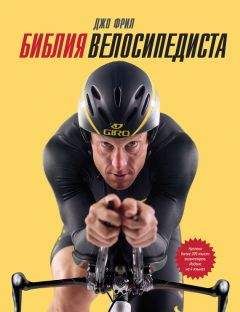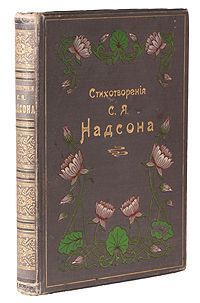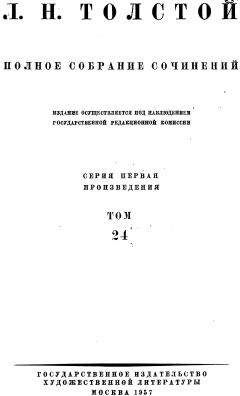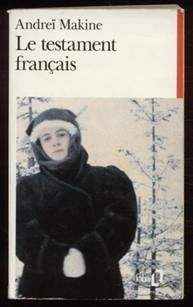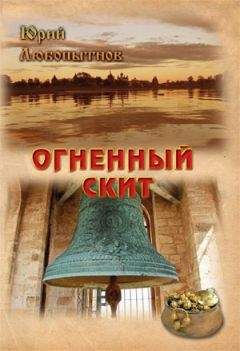Kreider, R. B., et al. Effects of Phosphate Loading on Metabolic and Myocardial Responses to Maximal and Endurance Exercise // International Journal of Sports Nutrition2, no. 1 (1992): 20–47.
Kreider, R. B., et al. Effects of Phosphate Loading on Oxygen Uptake, Ventilatory Anaerobic Threshold, and Run Performance // Medicine and Science in Sports and Exercise22, no. 2 (1990): 250–256.
Kubukeli, Z. N., T. D. Noakes, and S. C. Dennis. Training Techniques to Improve Endurance Exercise Performances // Sports Medicine32, no. 8 (2002): 489–509.
Kuipers, H., and H. A. Keizer. Overtraining in Elite Athletes: Review and Directions for the Future // Sports Medicine6 (1988): 79–92.
Kuipers, H., et al. Comparison of Heart Rate as a Non-Invasive Determination of Anaerobic Threshold with Lactate Threshold When Cycling // European Journal of Applied Physiology58 (1988): 303–306.
Legwold, G. Masters Competitors Age Little in Ten Years // The Physician and Sports Medicine10, no. 10 (1982): 27.
Lehmann, M., et al. Overtraining in Endurance Athletes: A Brief Review // Medicine and Science in Sports and Exercise25, no. 7 (1993): 854–862.
Lehmann, M., et al. Training-Overtraining: Influence of a Defined Increase in Training Volume versus Training Intensity on Performance, Catecholamines and Some Metabolic Parameters in Experienced Middle– and Long-Distance Runners // European Journal of Applied Physiology64, no. 2 (1992): 169–177.
LeMond, G., and K. Gordis. Greg LeMond’s Complete Book of Bicycling. New York: Perigee Books, 1988.
Lindsay, F. H., et al. Improved Athletic Performance in Highly Trained Cyclists after Interval Training // Medicine and Science in Sports and Exercise28, no. 11 (1996): 1427–1434.
Loehr, James. Mental Toughness Training for Sports. Brattelboro, VT: Stephen Greene Press, 1982.
Loehr, James. The New Mental Toughness Training for Sports.New York: Penguin Books, 1995.
Loftin, M., and B. Warren. Comparison of a Simulated 16.1-km Time Trial, VO2Max and Related Factors in Cyclists with Different Ventilatory Thresholds // International Journal of Sports Medicine15, no. 8 (1994): 498–503.
Luis, A., H. Joyes, and J. L. Chicharro. Physiological Response to Professional Road Cycling: Climbers vs. Time Trialists // International Journal of Sports Medicine21 (2001): 505–512.
Lynch, Jerry. Creative Coaching. Champaign, IL: Human Kinetics, 2001.
Lynch, Jerry. Running Within. Champaign, IL: Human Kinetics, 1999.
Lynch, Jerry. Thinking Body, Dancing Mind. New York: Bantam Books, 1992.
Lynch, Jerry. The Total Runner. Englewood Cliffs, NJ: Prentice Hall, 1987.
Lynch, Jerry, and Chungliang Al Huang. Working Without, Working Within. New York: Tarcher and Putnam, 1998.
MacLaren, C. P., et al. A Review of Metabolic and Physiologic Factors in Fatigue // Exercise and Sports Science Review17 (1989): 29.
Maglischo, E. Swimming Faster. Palo Alto, CA: Mayfield, 1982.
Marcinik, E. J., et al. Effects of Strength Training on Lactate Threshold and Endurance Performance // Medicine and Science in Sports and Exercise23, no. 6 (1991): 739–743.
Martin, D. E., and P. N. Coe. Training Distance Runners. Champaign, IL: Leisure Press, 1991.
Massey, L. K., et al. Interactions between Dietary Caffeine and Calcium on Calcium and Bone Metabolism in Older Women // Journal of the American College of Nutrition13 (1994): 592–596.
Matveyev, L. Fundamentals of Sports Training. Moscow: Progress Publishing, 1981.
Mayhew, J., and P. Gross. Body Composition Changes in Young Women and High Resistance Weight Training // Research Quarterly45 (1974): 433–440.
McArdle, W. D., F. I. Katch, and V. L. Katch. Exercise Physiology.Baltimore: Williams and Wilkins, 1996.
McCarthy, J. P., et al. Compatibility of Adaptive Responses with Combining Strength and Endurance Training // Medicine and Science in Sports and Exercise27, no. 3 (1995): 429–436.
McMurray, R. G., V. Ben-Ezra, W. A. Forsythe, and A. T. Smith. Responses of Endurance-Trained Subjects to Caloric Deficits Induced by Diet or Exercise // Medicine and Science in Sports and Exercise17, no. 5 (1985): 574–579.
McMurtrey, J. J., and R. Sherwin. History, Pharmacology and Toxicology of Caffeine and Caffeine-Containing Beverages // Clinical Nutrition6 (1987): 249–254.
Milne, C. The Tired Athlete // New Zealand Journal of Sports Medicine19, no. 3 (1991): 42–44.
Mujika, I., and S. Padilla. Creatine Supplementation as an Ergogenic Aid for Sports Performance in Highly Trained Athletes: A Critical Review // International Journal of Sports Medicine18, no. 7 (1997): 491–496.
Myburgh, K. H., et al. High-Intensity Training for 1 Month Improves Performance but Not Muscle Enzyme Activities in Highly Trained Cyclists // Medicine and Science in Sports and Exercise27, no. 5 (1995): S370.
Nelson, A. G., et al. Consequences of Combining Strength and Endurance Training Regimens // Physical Therapy70 (1990): 287–294.
Nelson, A. G., et al. Muscle Glycogen Supercompensation Is Enhanced by Prior Creatine Supplementation // Medicine and Science in Sports and Exercise33, no. 7 (2001): 1096–1100.
Neufer, P. D., et al. Effects of Reduced Training on Muscular Strength and Endurance in Competitive Swimmers // Medicine and Science in Sports and Exercise19 (1987): 486–490.
Newham, D. J., et al. Muscle Pain and Tenderness after Exercise // Australian Journal of Sports Medicine and Exercise Science14 (1982): 129–131.
Nicholls, J. F., et al. Relationship between Blood Lactate Response to Exercise and Endurance Performance in Competitive Female Masters Cyclists // International Journal of Sports Medicine18 (1997): 458–463.
Nieman, D. C., et al. Infectious Episodes in Runners before and after the Los Angeles Marathon // Journal of Sports Medicine and Physical Fitness30 (1990): 316–338.
Niles, R. Power as a Determinant of Endurance Performance // Неопубликованное исследование, проведенное в Sonoma State University, 1991.
Noakes, T. D. Implications of Exercise Testing for Prediction of Athletic Performance: A Contemporary Perspective // Medicine and Science in Sports and Exercise20, no. 4 (1988): 319–330.
O’Brien, C., et al. Glycerol Hyperhydration: Physiological Responses during Cold-Air Exposure // Journal of Applied Physiology99 (2005): 515–521.
Okkels, T. The Effect of Interval and Tempo Training on Performance and Skeletal Muscle in Well-Trained Runners // Acoteias, Portugal: Twelfth European Track Coaches Congress (1983): 1–9.
Orlick, Terry. Psyched to Win. Champaign, IL: Leisure Press, 1992.
Orlick, Terry. Psyching for Sport. Champaign, IL: Leisure Press, 1986.
Parizkova, J. Body Composition and Exercise during Growth and Development // Physical Activity: Human Growth and Development(1974).
Pate, R. R., et al. Cardiorespiratory and Metabolic Responses to Submaximal and Maximal Exercise in Elite Women Distance Runners // International Journal of Sports Medicine8, no. 2 (1987): 91–95.
Paton, C. D., and W. G. Hopkins. Combining Explosive and High-Resistance Training Improves Performance in Competitive Cyclists // Journal of Strength and Conditioning Research19, no. 4 (2005): 826–830.
Peyrebrune, M. C., et al. The Effects of Oral Creatine Supplementation on Performance in Single and Repeated Sprint Training // Journal of Sports Science16, no. 3 (1998): 271–279.
Phillips, S. M., et al. Mixed Muscle Protein Synthesis and Breakdown after Resistance Exercise in Humans // American Journal of Physiology273, no. 1 (1997): E99–E107.
Phinney, D., and C. Carpenter. Training for Cycling. New York: Putnam, 1992.
Piatti, P. M., F. Monti, and I. Fermo, et al. Hypocaloric, High-Protein Diet Improves Glucose Oxidation and Spares Lean Body Mass: Comparison to Hypocaloric, High Carbohydrate Diet // Metabolism43, no. 12 (1994): 1481–1487.
Pollock, M., et al. Effect of Age and Training on Aerobic Capacity and Body Composition of Master Athletes // Journal of Applied Physiology62, no. 2 (1987): 725–731.
Pollock, M., et al. Frequency of Training as a Determinant for Improvement in Cardiovascular Function and Body Composition of Middle-Aged Men // Archives of Physical Medicine and Rehabilitation56 (1975): 141–145.
Pompcu, F. A., et al. Prediction of Performance in the 5000m Run by Means of Laboratory and Field Tests in Male Distance Runners // Medicine and Science in Sports and Exercise28, no. 5 (1996): S89.
Poole, D. C., et al. Determinants of Oxygen Uptake // Sports Medicine24 (1996): 308–320.
Rankin, J. W. Weight Loss and Gain in Athletes // Current Sports Medicine Reports1, no. 4 (2002): 208–213.
Rasmussen, B. B., et al. An Oral Essential Amino Acid – Carbohydrate Supplement Enhances Muscle Protein Anabolism after Resistance Exercise // Journal of Applied Physiology88, no. 2 (2000): 386–392.
Ready, S. L., et al. Effect of Two Sports Drinks on Muscle Tissue Stress and Performance // Medicine and Science in Sports and Exercise31, no. 5 (1999): S119.
Remer, T., and F. Manz. Potential Renal Acid Load of Foods and Its Influence on Urine pH // Journal of the American Dietetic Association95, no. 7 (1995): 791–797.
Rhea, M. R., S. D. Ball, W. T. Phillips, and L. N. Burkett. A Comparison of Linear and Daily Undulating Periodized Programs with Equated Volume and Intensity for Strength // Journal of Strength Conditioning Research16, no. 2 (2002): 250–255.
Rhea, M. R., W. T. Phillips, L. N. Burkett, W. J. Stone, S. D. Ball, B. A. Alvar, and A. B. Thomas. A Comparison of Linear and Daily Undulating Periodized Programs with Equated Volume and Intensity for Local Muscular Endurance // Journal of Strength Conditioning Research17, no. 1 (2003): 82–87.
Rogers, J. Periodization of Training // Endurance Training Journal2 (1992): 4–7.
Rogers, M. A., et al. Decline in VO2max with Aging in Masters Athletes and Sedentary Men // Journal of Applied Physiology68, no. 5 (1990): 2195–2199.
Romijn, J. A., et al. Regulation of Endogenous Fat and Carbohydrate Metabolism in Relation to Exercise Intensity and Duration // American Journal of Physiology265 (1993): E380.
Roth, S. M., et al. High-Volume, Heavy-Resistance Strength Training and Muscle Damage in Young and Older Men // Journal of Applied Physiology88, no. 3 (2000): 1112–1119.
Rountree, S. The Athlete’s Guide to Yoga. Boulder: VeloPress, 2008.
Roy, B. D., et al. Effect of Glucose Supplement Timing on Protein Metabolism after Resistance Training // Journal of Applied Physiology82 (1997): 1882–1888.
Roy, B. D., et al. The Influence of Post-Exercise Macronutrient Intake on Energy Balance and Protein Metabolism in Active Females Participating in Endurance Training // International Journal of Sport Nutrition, Exercise and Metabolism12, no. 2 (2002): 172–188.
Sale, D. G., and D. MacDougall. Specificity in Strength Training: A Review for the Coach and Athlete // Canadian Journal of Applied Sciences6 (1981): 87–92.
Sale, D. G., et al. Comparison of Two Regimens of Concurrent Strength and Endurance Training. Medicine and Science in Sports and Exercise22, no. 3 (1990): 348–356.
Schatz, M. P. Easy Hamstring Stretches // Physician and Sports Medicine22, no. 2 (1994): 115–116.
Schneider, D. A., et al. Ventilatory Thresholds and Maximal Oxygen Uptake during Cycling and Running in Biathletes // Medicine and Science in Sports and Exercise22, no. 2 (1990): 257–264.
Schumacher, Y. O., and P. Mueller. The 4000-m Team Pursuit Cycling World Record: Theoretical and Practical Aspects // Medicine and Science in Sports and Exercise34, no. 6 (2002): 1029–1036.
Seals, D. R., et al. Endurance Training in Older Men and Women // Journal of Applied Physiology57 (1984): 1024–1029.
Sebastian, A., et al. Improved Mineral Balance and Skeletal Metabolism in Postmenopausal Women Treated with Potassium Bicarbonate // New England Journal of Medicine330, no. 25 (1994): 1776–1781.
Seiler, K. S., and G. O. Kjerland. Quantifying Training Intensity Distribution in Elite Endurance Athletes: Is There Evidence for Optimal Distribution? // Scandinavian Journal of Medicine & Science in Sports16, no. 1 (2006): 49–56.
Shangold, M. M., and G. Mirkin, eds. Women and Exercise: Physiology and Sports Medicine. Philadelphia: F. A. Davis, 1988.
Sharkey, B. Coaches’ Guide to Sport Physiology. Champaign, IL: Human Kinetics, 1986.
Sharp, N. C. C., and Y. Koutedakis. Sport and the Overtraining Syndrome // British Medical Journal48, no. 3 (1992): 518–533.
Shasby, G. B., and F. C. Hagerman. The Effects of Conditioning on Cardiorespiratory Function in Adolescent Boys // Journal of Sports Medicine3 (1975): 97–107.
Simon, J., et al. Plasma Lactate and Ventilation Thresholds in Trained and Untrained Cyclists // Journal of Applied Physiology60 (1986): 777–781.
